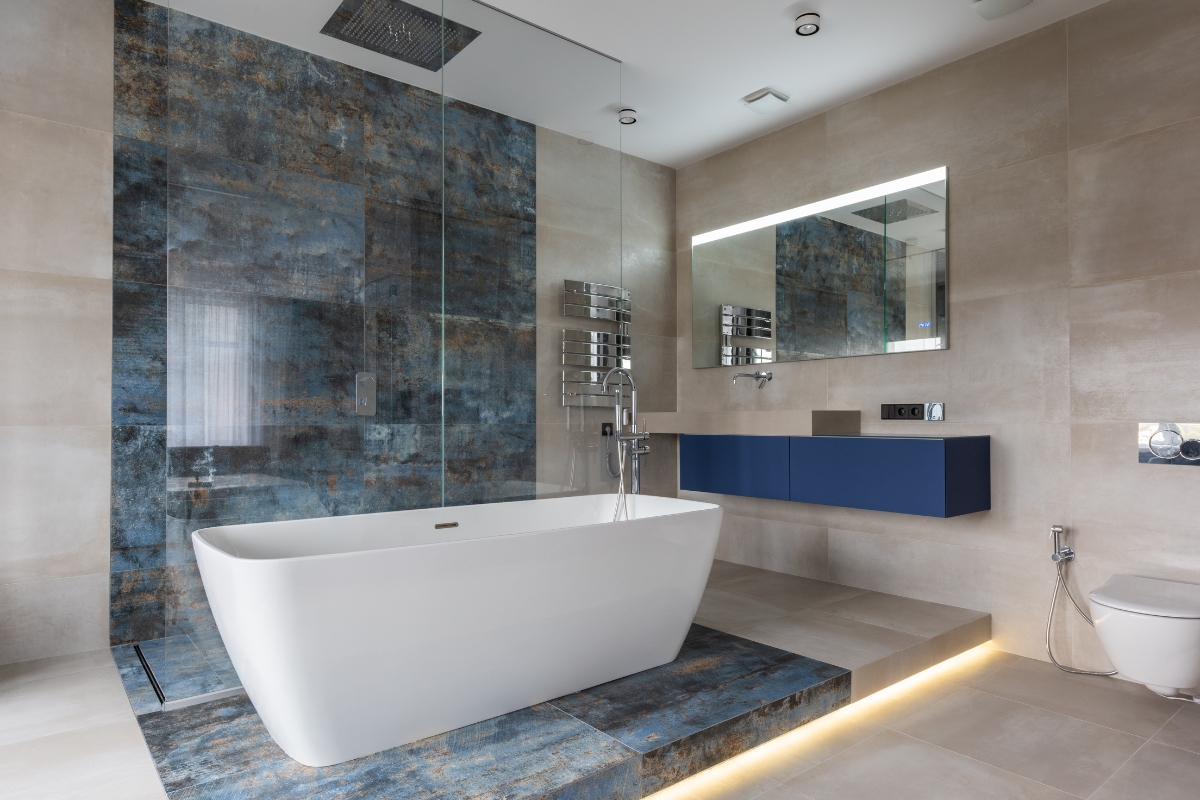Choosing the right bathroom tile flooring can completely transform the look and functionality of your space—especially in a stylish neighborhood like Vinings. From timeless classics to cutting-edge trends, today’s tile options offer both beauty and durability, making them a smart investment for any remodel. Whether you’re planning a full bathroom upgrade or just exploring fresh ideas, understanding the latest trends, practical benefits, and expert installation tips can help you make the best choice. In this guide, we’ll dive into everything you need to know to elevate your Vinings bathroom with the perfect tile flooring.
Everything You Need to Know About Bathroom Tile Flooring in Vinings
Understanding the Importance of Bathroom Tile Flooring in Vinings
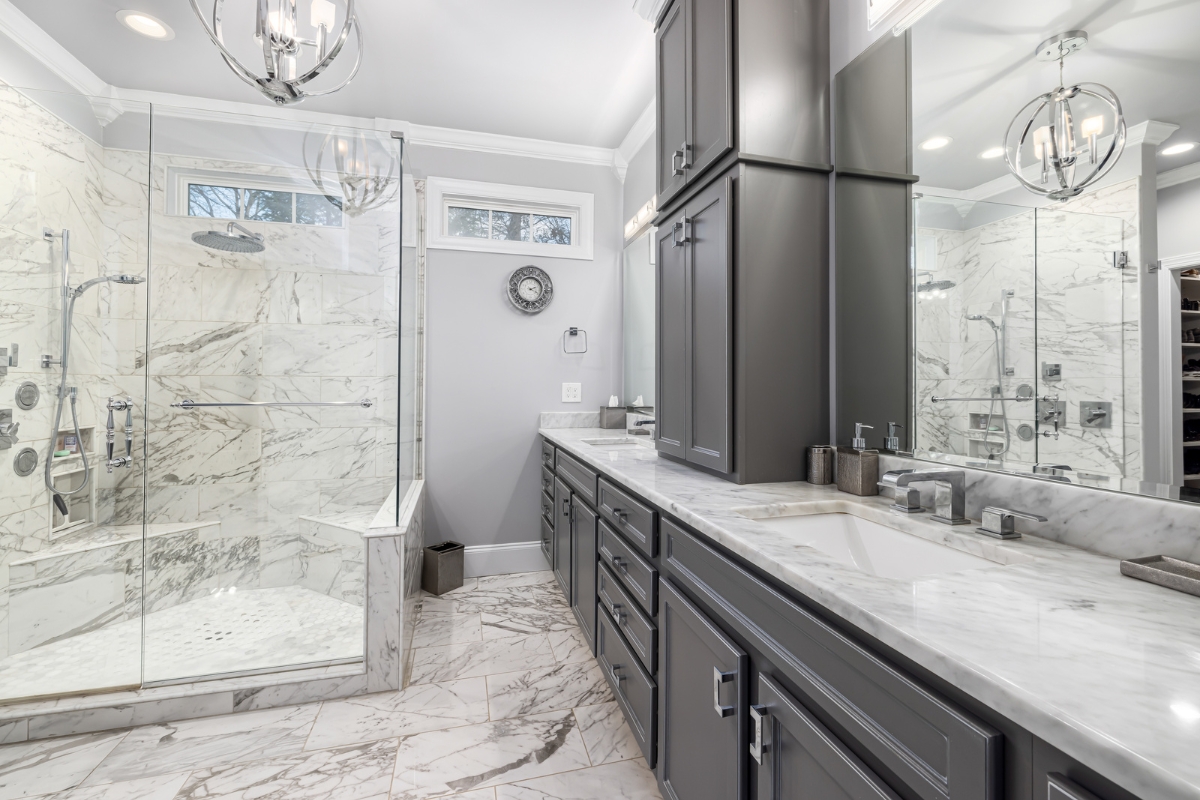
Bathroom tile flooring does more than tie a room together. It plays a key role in how your bathroom performs and holds up over time. In a place like Vinings, where high humidity and seasonal temperature swings are common, the material you choose for the floor matters. The wrong tile can lead to moisture problems, slippery surfaces, and early wear. On the other hand, well-selected bathroom tile provides traction, holds up to daily use, and resists mold and water damage.
Tile specifically made for bathrooms is designed to handle wet environments. Porcelain and ceramic tiles are popular choices because they are durable, non-porous, and easy to maintain. Textured or matte finishes can also reduce the risk of slipping, which is especially helpful in homes with kids or older adults. With the right tile, you can enjoy peace of mind knowing your floor won’t buckle or crack under pressure from everyday use.
Beyond function, tile flooring also sets the tone for the entire space. Whether you prefer clean, modern lines or a more traditional look, the floor often serves as the visual anchor of the bathroom. Neutral tones like gray, beige, and soft white remain popular, but patterned or geometric tiles can add personality without overwhelming the space. Choosing a tile that complements your vanity, shower, and wall colors helps create a cohesive look.
A well-designed bathroom floor also adds value to your home. Buyers notice quality finishes, and a bathroom that looks well put together suggests that the rest of the house has been taken care of too. It’s a detail that can make your home more competitive in the Vinings real estate market. Even if you’re not planning to sell soon, investing in good flooring pays off in terms of comfort, durability, and day-to-day usability.
Expert Tips for Selecting the Right Bathroom Tiles
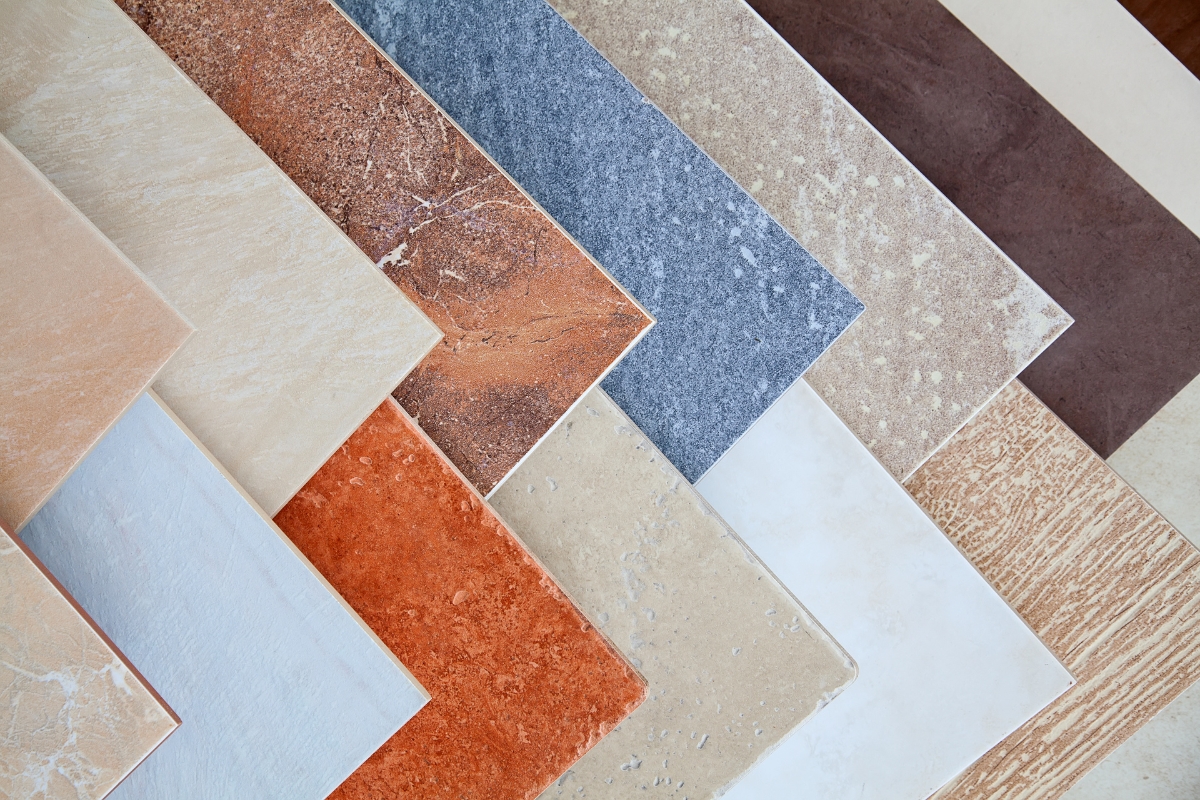
Choosing the right bathroom tile flooring means weighing both style and practicality. A bathroom sees regular use, often in damp conditions, so your tiles need to be more than just attractive. They should hold up to foot traffic, resist moisture, and help prevent slips. Start by thinking about how the space is used. In a busy household, for example, durability matters. Go with a hard-wearing material like porcelain or ceramic, and look for a matte or textured finish that provides traction when wet.
Another important factor is how easy the tile is to clean. Glossy tiles may show water spots and require frequent wiping, while rougher surfaces can trap grime if not sealed properly. Check the tile’s water absorption rating, and if your bathroom has a shower or tub, focus on tiles that can handle daily splashes without warping or staining.
Style is still a big part of the decision. Neutral colors such as white, gray, and beige remain popular because they blend easily with different decor styles and keep the space feeling open. If you want something more eye-catching, consider patterned tiles or a bold accent strip. These can add character without overwhelming the room. Just make sure the design complements your existing fixtures and cabinetry.
Size also plays a role in how the room looks and feels. Large-format tiles can make a small bathroom feel more spacious, while smaller tiles or mosaics are often used on shower floors or as accent pieces. Keep grout lines in mind too—darker grout hides dirt better but may look heavier, while lighter grout can make the space look brighter but may need more upkeep.
Before committing, order a few samples and look at them in the actual bathroom. The lighting in your home can change how colors appear, and viewing the tiles next to your vanity or tub helps you see how everything works together. Taking time to compare options in person avoids surprises later.
Trending Designs and Patterns for Bathroom Tile Flooring

Bathroom tile trends are shifting toward more creative and practical choices that still stand the test of time. Homeowners are no longer settling for plain white squares. Instead, they’re turning to patterns and textures that add interest without being too bold.
Geometric shapes like hexagons, herringbone, and chevrons are especially popular right now. These patterns add movement and style to the floor without making the room feel busy. They work well in both small powder rooms and larger master baths. You can use them to tile the entire floor or as a border to break up simpler tiles.
Mosaic tile is also seeing a resurgence. Tiny glass or porcelain pieces arranged in repeating patterns or custom designs give the space a handcrafted feel. Whether you go for classic black and white or mix in colors like seafoam green or navy blue, mosaic floors add a touch of personality. Some homeowners even use them to create a rug-like effect in the center of the room.
Another trend gaining ground is the use of large-format tiles. These tiles reduce the number of grout lines, which helps the space look cleaner and more modern. They also make small bathrooms appear more open. Some of the most popular large tiles right now have a stone or concrete look, offering a natural, spa-like vibe without the maintenance that real stone requires.
Texture is also playing a bigger role. Matte finishes and subtle surface variation are in demand because they provide a more grounded, practical look and improve slip resistance. Tiles that mimic the appearance of wood or natural stone bring warmth to bathrooms, which can often feel cold and sterile.
When choosing patterns or designs, keep the size of your bathroom in mind. Too many competing shapes or colors can make a small space feel crowded. Stick to one or two tile styles to create a balanced look.
In Vinings, where homeowners appreciate a mix of style and practicality, these trends offer a chance to update your bathroom with something fresh without going overboard. The right tile pattern can turn your bathroom into a space that feels both current and comfortable.
Exploring Different Material Options for Bathroom Tiles

When it comes to bathroom flooring, not all tiles are created equal. The right material can make a big difference in how your space looks, feels, and holds up over time. In most homes, bathroom floors see a lot of moisture, temperature changes, and foot traffic. That’s why it’s important to choose a tile that’s both practical and good-looking.
Ceramic and porcelain tiles are two of the most common picks for bathroom floors—and for good reason. Both are tough, water-resistant, and budget-friendly. Porcelain is a bit denser and less porous than ceramic, which makes it more resistant to moisture and wear. It’s a solid choice for bathrooms that get a lot of use. Ceramic tiles, on the other hand, come in more colors, finishes, and styles. They’re easier to cut and usually cost a little less, which can be helpful if you’re tiling a large space or working within a tight budget.
If you’re going for a more upscale or natural look, stone tiles like marble, slate, or travertine might be worth considering. These materials bring a unique, high-end feel to any bathroom, but they do come with some extra care. Natural stone is porous, so it needs sealing to help prevent stains and water damage. It’s also more likely to scratch or chip, which means it may not be the best choice for high-traffic bathrooms unless you’re prepared for the upkeep.
There are also newer options worth checking out. Engineered stone tiles give you the look of natural stone but with better durability and less maintenance. Luxury vinyl tile (LVT) is another popular alternative. It mimics the look of ceramic, stone, or wood but is softer underfoot and warmer to the touch. LVT is also waterproof and easy to install, which makes it a smart choice for households with kids or pets.
Before making a final decision, think about your lifestyle, how much maintenance you’re willing to do, and the look you’re going for. With the right material, your bathroom tile flooring can hold up well for years while still matching your style and budget.
Maximizing Space with Layout and Tile Size Selection
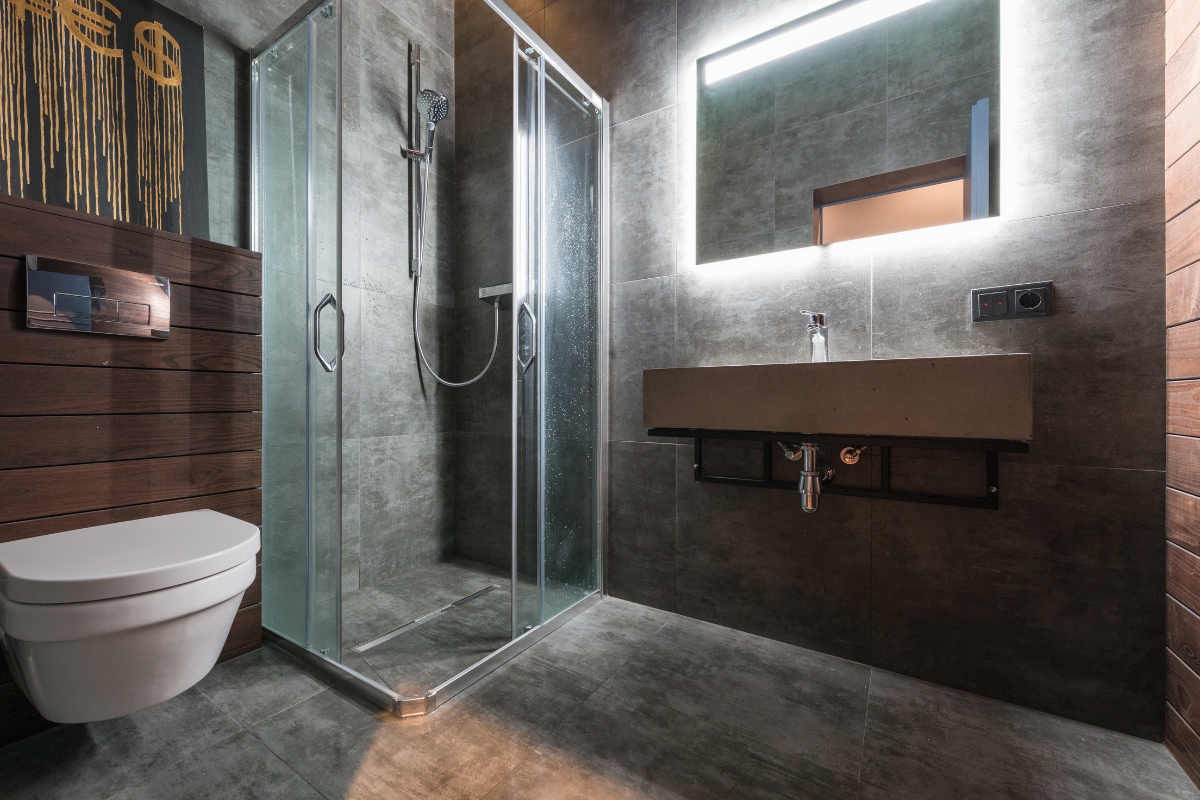
The size and layout of your bathroom tile can make a big difference in how large or small the room feels. In bathrooms where space is tight—which is often the case in many Vinings homes—choosing the right tile format helps create a more open, organized look.
Large-format tiles are a popular choice for smaller bathrooms because they make the space feel less cluttered. With fewer grout lines and visual breaks, these tiles create smoother surfaces and help the room look bigger than it actually is. They’re especially effective on floors and in walk-in showers where a clean, modern look is the goal.
That said, big tiles aren’t the best fit for every space. In bathrooms with tight corners or slopes, such as around tubs or slanted floors for drainage, smaller tiles are often a better option. Mosaics, penny rounds, or classic subway tiles are more adaptable to uneven surfaces and can follow curves or angled walls. They’re also a smart pick for shower floors, where extra grout lines help improve traction and reduce the chance of slipping.
You can also use smaller tiles to highlight certain features. For example, a mosaic backsplash behind the sink or a band of decorative tiles around the shower niche adds visual interest without overwhelming the space. The trick is to use small tiles in the right places, not everywhere, to keep things balanced.
Paying attention to layout matters too. Running rectangular tiles vertically instead of horizontally can make low ceilings seem taller. Diagonal layouts, on the other hand, can create a feeling of movement and openness on the floor. It’s all about using lines and shapes to your advantage.
In the end, the goal is to match tile size and layout to the actual dimensions of your bathroom. By doing so, you’ll not only improve the overall look of the room but also make it more comfortable and functional. Whether you’re aiming for a sleek modern vibe or a more detailed, traditional look, thoughtful tile sizing and placement can go a long way in getting the most out of your space.
Enhancing Bathroom Aesthetics with Color and Finish Choices

Choosing the right color and finish for your bathroom tile flooring can completely change how the space looks and feels. It is not just about style—your decisions can also affect lighting, comfort, and how easy it is to keep the space clean.
Light colors like white, beige, or soft gray are go-to options for making a bathroom feel open and calm. These tones help reflect light and can make a small space look bigger. If you’re aiming for a clean, spa-like look, these shades are a safe bet. They also work well with most fixtures and paint choices, making future updates easier.
On the other hand, dark colors such as charcoal, navy, or deep green can add a modern edge or dramatic contrast. When paired with lighter walls or shiny hardware, dark tile floors can help define the space and create a more grounded, high-end feel. Just keep in mind that darker tiles might show dust, soap marks, or water spots more easily, so regular cleaning is important.
Beyond color, the finish of your tile can affect both looks and performance. Matte finishes have become more popular in recent years because they provide a softer, less reflective appearance and offer better slip resistance. They’re a smart choice for floors, especially in wet areas like bathrooms.
Glossy finishes, by contrast, bounce light around the room and can help brighten darker spaces. These tiles work well on walls or as decorative accents, but they can be slippery when wet, so they’re not ideal for floors unless specifically rated for that use.
Textured finishes, such as wood-look tiles or stone-patterned surfaces, bring a natural feel into the space. These textures can add grip underfoot and bring in some visual warmth, especially in bathrooms that might otherwise feel a bit cold or clinical.
The key is to strike the right balance between color, finish, and function. Think about how the tile will look in both natural and artificial light, and consider your lifestyle and maintenance preferences. When chosen thoughtfully, your tile choices can elevate the entire room without making it feel overdone.
Practical Considerations: Maintenance and Longevity of Bathroom Tiles
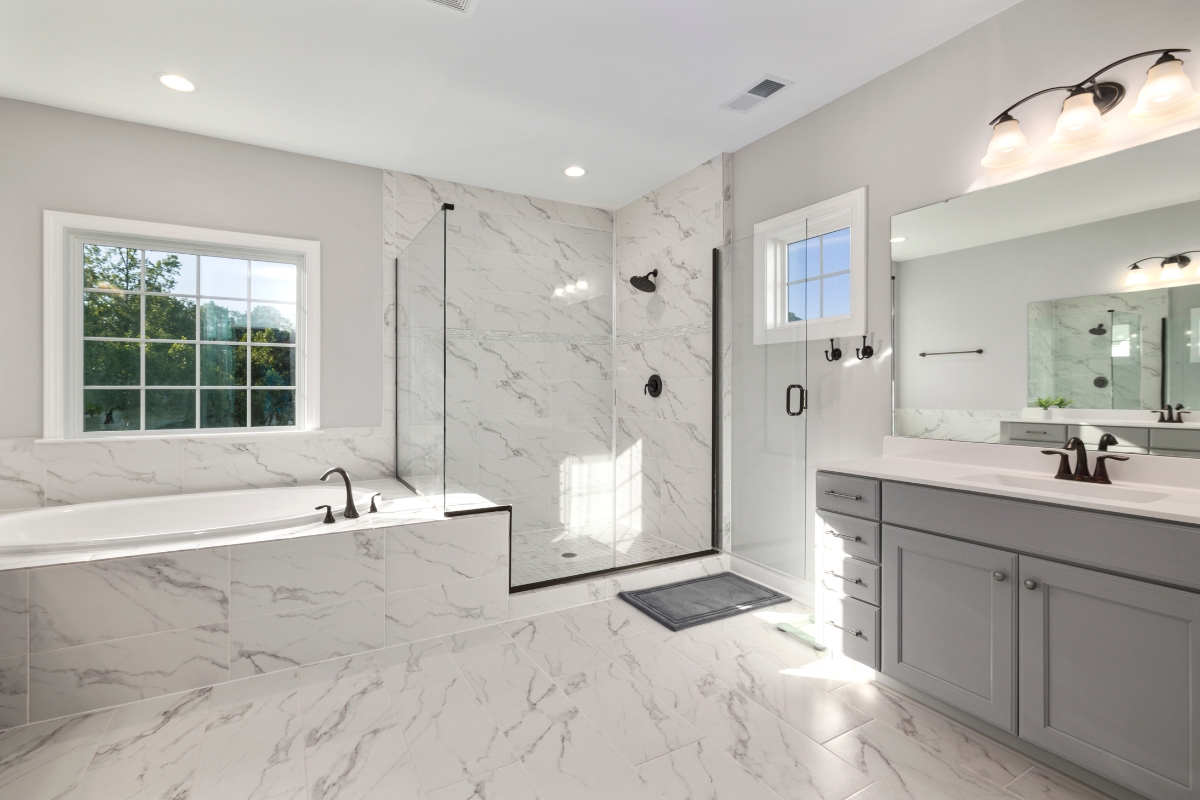
Keeping bathroom tile floors in good shape takes a little effort, but the payoff is long-lasting, clean, and attractive surfaces. Regular upkeep not only keeps your bathroom looking nice but also protects against damage that can be costly to fix.
Start with basic cleaning. Sweep or vacuum regularly to remove dust, hair, and loose dirt. This helps prevent grime from building up in the grout lines. When mopping, stick to a pH-neutral cleaner that’s safe for tile. These cleaners remove everyday messes without breaking down the grout or dulling the tile’s finish. Stay away from harsh chemicals like bleach or ammonia, especially if your tiles are natural stone, as they can cause discoloration or wear. Abrasive scrubbers can also scratch the surface and wear away protective coatings.
Grout maintenance is just as important as cleaning the tiles themselves. Grout is porous, meaning it absorbs water and stains if not sealed properly. Applying a quality grout sealer every six months to a year helps block moisture and keeps the grout from cracking, fading, or growing mold. High-moisture areas like showers may need sealing more often depending on how frequently they’re used.
If you’ve chosen natural stone tiles like marble, slate, or travertine, know that they need a bit more care than ceramic or porcelain. Natural stone should be resealed annually by a professional to prevent water damage, staining, and surface erosion. For ceramic and porcelain tiles, sealing usually isn’t necessary, but it’s still important to keep an eye on any signs of wear, like chipping or changes in finish.
Pay attention to any loose or cracked tiles as well. Fixing small issues early on prevents water from seeping under the tile and damaging the subfloor. If you notice a tile starting to shift or a section of grout missing, it’s best to repair it promptly.
A simple, consistent maintenance routine makes all the difference. With the right care, your bathroom tile flooring will continue to look great, resist damage, and perform well for many years without major repairs or replacements.
Benefits of Investing in Quality Bathroom Tile Flooring
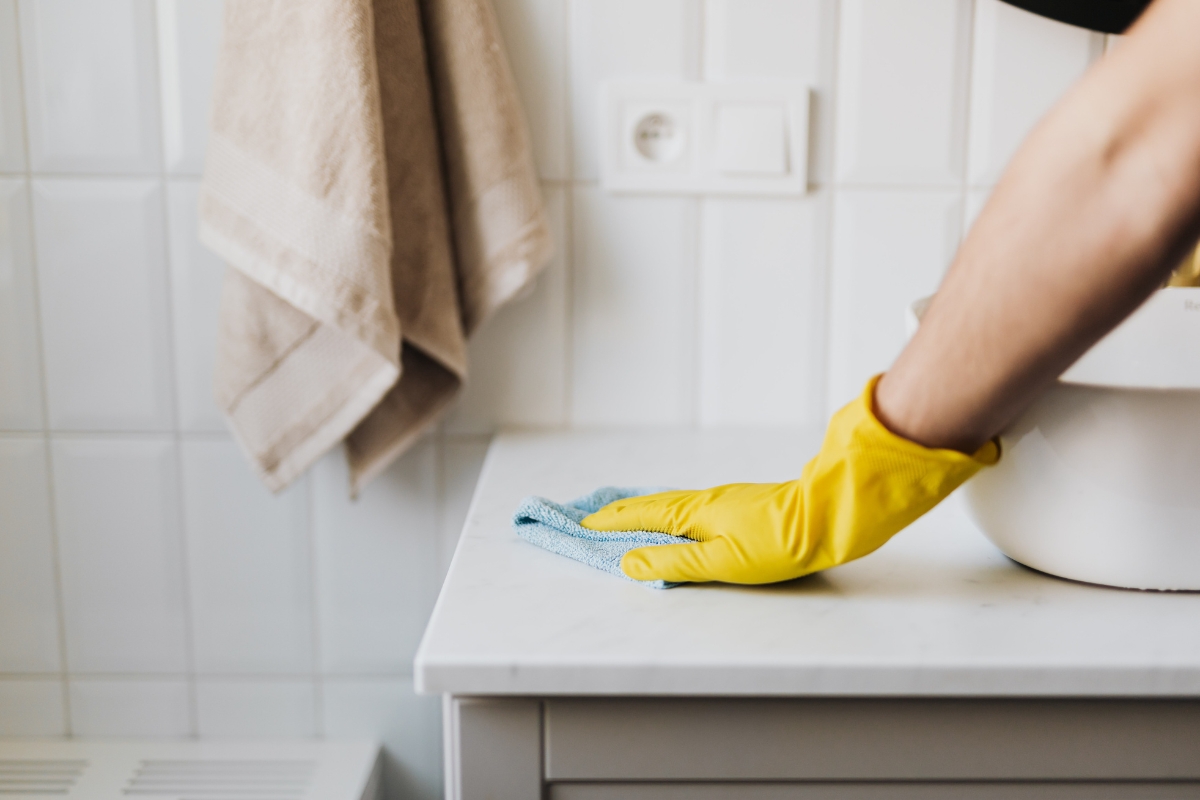
Choosing high-quality tile for your bathroom floor isn’t just about looks. It’s a practical decision that can pay off in several ways, both right now and down the line. Quality tile stands up to daily wear and tear. It’s more resistant to cracking, chipping, and staining, which means you won’t have to worry as much about replacing broken pieces or dealing with frequent touch-ups.
A big benefit of better tile is its performance in wet environments. Well-made tiles are less porous and have better slip resistance, which is especially important in a space that’s often damp. This is a key safety feature for families with kids or older adults who might be more at risk for slips and falls. Less moisture getting into the tile also means a cleaner bathroom with less chance of mold or mildew taking hold.
Durability aside, good tile can actually boost the value of your home. When buyers walk into a bathroom and see a clean, well-installed tile floor, it sends a strong signal that the home has been taken care of. Many real estate agents point to updated bathrooms as one of the best ways to increase resale value. Even if you’re not planning to sell anytime soon, knowing you’ve made a solid, lasting improvement is still rewarding.
Another perk is that higher-end tiles often come with better support. Manufacturers of premium tile typically offer longer warranties, and you’re more likely to find experienced installers who specialize in working with these products. This helps ensure the tile is installed correctly, which is just as important as the material itself.
Over time, lower-cost tiles can start to show their age quickly. Edges chip, colors fade, and grout starts to crack. While it might cost less upfront, cheaper tile usually means more maintenance and earlier replacement. Quality tile holds up better, stays looking good, and requires fewer repairs.
Conclusion: Elevating Your Bathroom Space with the Perfect Tiles
Choosing the right tile flooring can transform your Vinings bathroom into a stylish, durable, and easy-to-maintain sanctuary. From classic porcelain to trendy geometric patterns, the expert bathroom remodeling services team at Kitchen and Bath by Zeus stays ahead of the latest trends to deliver beautiful results that stand the test of time. Ready to elevate your bathroom with premium tile flooring? Call us at 404-602-2668 or fill out our online form for a free consultation, and let’s create a space you’ll love for years to come.


